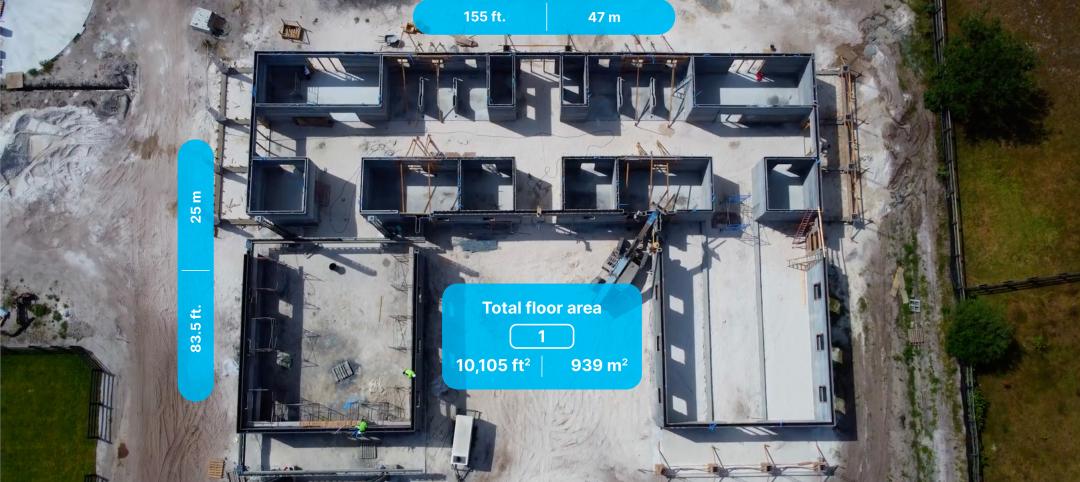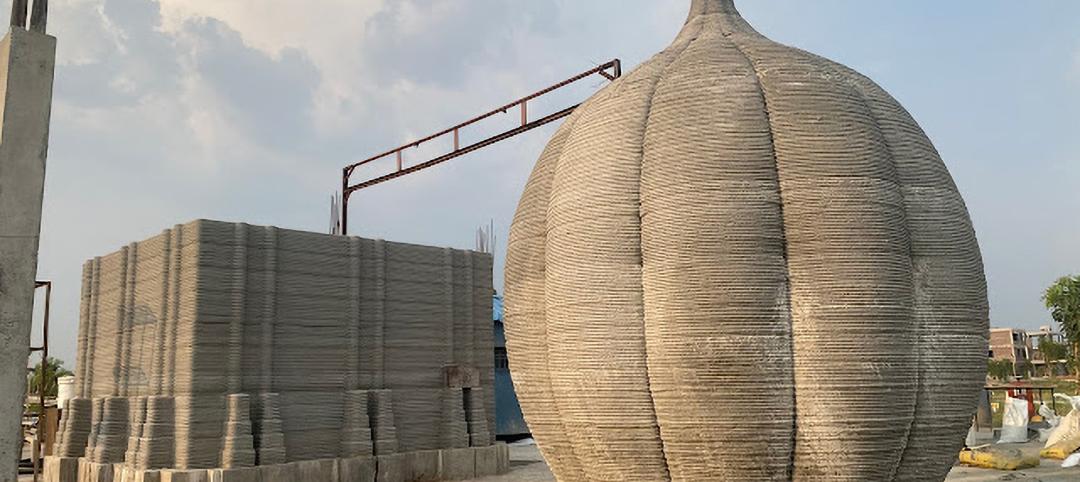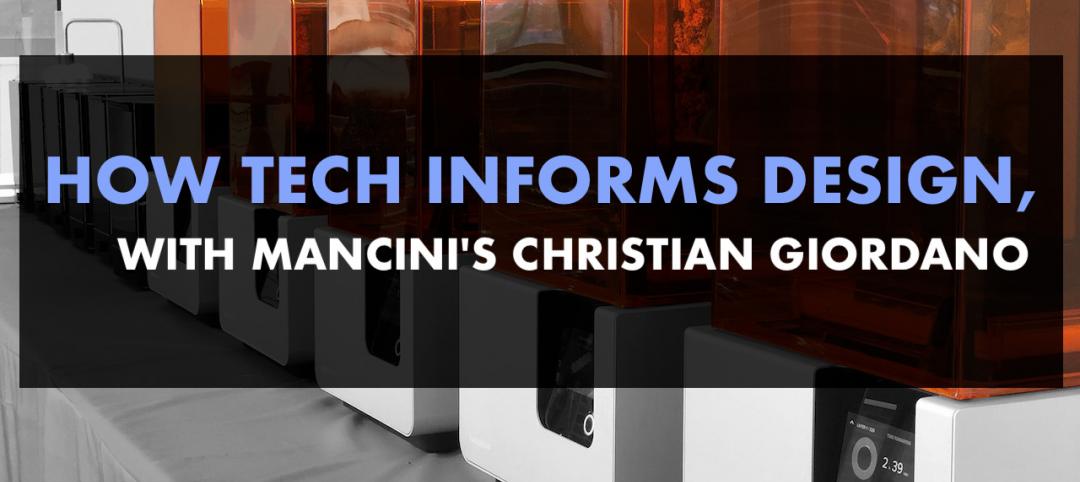In recent years, the design firm Gresham Smith has seen the introduction of additive manufacturing into its industrial-sector work. “We have several clients that are using additive manufacturing to make production tools,” says David Verner, RA, Executive Vice President in the firm’s Industrial market.
Additive manufacturing (AM)—the process of fabricating parts and components from 3D model data—has emerged as a multi-billion-dollar business with considerable runway to grow.
“Almost all of our manufacturing clients are using additive manufacturing in their R&D operations,” says George Halkias, a Senior Principal with Stantec. A few of those clients have already layered aspects of AM onto their commercial processes.
Ware Malcomb has also seen increased demand for industrial facilities with additive manufacturing capabilities, especially in automotive and aviation fields that produce 3D-printed metal parts, says Michael Bennett, a Principal. He notes that among the specialized needs to support this technology are enhanced power, specific gases, and tank farms.
Additive manufacturing comes to the production line
Verner says that, in some cases, Gresham Smith’s team members are designing tools based on input from production-line workers. For example, it designed a replacement O-ring that once cost its client $20 per piece to produce. The client, says Verner, can now make that O-ring via onsite AM for less than 50 cents each. For replacement parts and tools described, the identified annual cost savings for this client is now almost $1 million.
Gresham Smith currently has under construction an AM R&D/contract manufacturing facility it designed. That site, says Verner, will build prototypes of parts and products from various materials, including titanium. The goal is to be able to build one or 100 items on demand cost effectively, he says.
Related content: Additive manufacturing heads to the jobsite
Clayco is a member of an executive committee that is exploring ways to bring AM to more industrial jobsites. The committee includes a real estate developer, designers, and AM companies. “We are analyzing the business model and preparing to implement AM onsite in a beta-test scale,” says Anthony J. Johnson, an Executive Vice President with Clayco.
Burns & McDonnell has developed an “additive playbook,” says Wade Anderson, Senior Project Manager, to help one of its clients identify key considerations that might influence design and construction, such as material storage and handling, cross contamination of materials, hazardous material requirements, air quality, power continuity, and special finishes.
Related Stories
3D Printing | Oct 9, 2024
3D-printed construction milestones take shape in Tennessee and Texas
Two notable 3D-printed projects mark milestones in the new construction technique of “printing” structures with specialized concrete. In Athens, Tennessee, Walmart hired Alquist 3D to build a 20-foot-high store expansion, one of the largest freestanding 3D-printed commercial concrete structures in the U.S. In Marfa, Texas, the world’s first 3D-printed hotel is under construction at an existing hotel and campground site.
3D Printing | Sep 17, 2024
Alquist 3D and Walmart complete one of the nation’s largest free-standing, 3D-printed commercial structures
Walmart has completed one of the largest free-standing, 3D-printed commercial structures in the US. Alquist 3D printed the almost 8,000-sf, 20-foot-high addition to a Walmart store in Athens, Tenn. The expansion, which will be used for online pickup and delivery, is the first time Walmart has applied 3D printing technology at this scale.
3D Printing | Sep 13, 2024
Swiss researchers develop robotic additive manufacturing method that uses earth-based materials—and not cement
Researchers at ETH Zurich, a university in Switzerland, have developed a new robotic additive manufacturing method to help make the construction industry more sustainable. Unlike concrete 3D printing, the process does not require cement.
3D Printing | Jun 20, 2023
World's largest 3D-printed building completed in Florida
Printed Farms, known for completing Florida’s first permitted 3D-printed house in Tallahassee, announces the completion of the world’s largest 3D-printed building: a luxury horse barn.
3D Printing | Jun 1, 2023
World's first 3D-printed place of worship being built in India
The 3D-printed temple is set to embark on an architectural revolution in the Nation.
3D Printing | May 12, 2023
World’s first 3D-printed medical center completed
3D construction printing reached new heights this week as the world’s first 3D-printed medical center was completed in Thailand.
Sustainability | May 1, 2023
Increased focus on sustainability is good for business and attracting employees
A recent study, 2023 State of Design & Make by software developer Autodesk, contains some interesting takeaways for the design and construction industry. Respondents to a survey of industry leaders from the architecture, engineering, construction, product design, manufacturing, and entertainment spheres strongly support the idea that improving their organization’s sustainability practices is good for business.
3D Printing | Apr 11, 2023
University of Michigan’s DART Laboratory unveils Shell Wall—a concrete wall that’s lightweight and freeform 3D printed
The University of Michigan’s DART Laboratory has unveiled a new product called Shell Wall—which the organization describes as the first lightweight, freeform 3D printed and structurally reinforced concrete wall. The innovative product leverages DART Laboratory’s research and development on the use of 3D-printing technology to build structures that require less concrete.
3D Printing | Jan 12, 2022
Using 3D-printed molds to create unitized window forms
COOKFOX designer Pam Campbell and Gate Precast's Mo Wright discuss the use of 3D-printed molds from Oak Ridge National Lab to create unitized window panels for One South First, a residential-commercial high-rise in Brooklyn, N.Y.
AEC Tech Innovation | Oct 7, 2021
How tech informs design: A conversation with Mancini's Christian Giordano
Mancini's growth strategy includes developing tech tools that help clients appreciate its work.

















